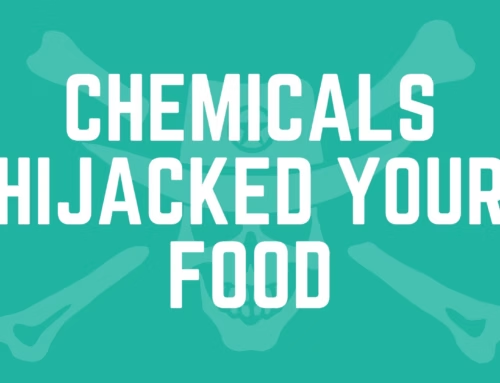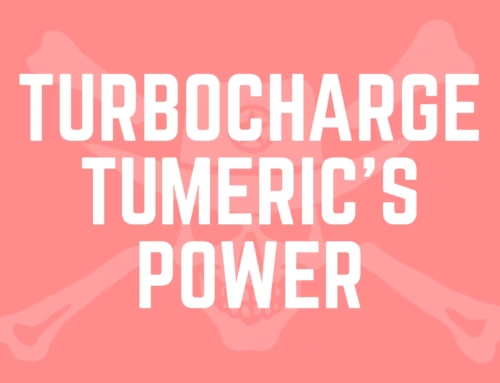The Anti-Inflammatory Diet: What to Eat and Why It Works
Why Diet Is Your First Line of Defense
Imagine your bloodstream as a river—what you pour into it sets the tone. Every processed snack, soda, or refined carb is like pouring toxic sludge that sparks your immune system into overdrive. Conversely, whole foods act like a cleansing current, washing away oxidative stress and calming inflammatory alarms.
Research Snapshot: In one randomized trial, volunteers who switched from a standard Western diet to a whole-food, anti-inflammatory plan saw their C-reactive protein (CRP) drop by an average of 35% in just six weeks. Meanwhile, those who maintained high sugar and processed-food intake experienced a 30–50% rise in CRP over the same period.
That means your very next meal can either dial up your inflammation or dial it down—making your plate the most powerful tool you own.
Core Principles of an Anti-Inflammatory Diet
At its heart, an anti-inflammatory diet is less about strict rules and more about principles you can apply flexibly. Focus on these four cornerstones to build meals that soothe, not stoke, inflammation:
- Whole, Unprocessed Foods
Context: Every time you eliminate refined grains, added sugars, and preservatives, you remove compounds linked to oxidative stress and “leaky gut.”
Tip: Shop the perimeter of the grocery store—produce, meat, dairy, nuts—where real foods live. - Balance Fats
Context: Modern diets skew toward omega-6–heavy vegetable oils, tipping the ratio as high as 20:1 (omega-6:omega-3). Aim for a 2–4:1 ratio by emphasizing fatty fish, flax, chia, and walnuts.
Tip: Meal swap: trade your usual mayo (soybean oil) for a sardine mash on toast, adding 1,000 mg of anti-inflammatory EPA/DHA. - Color & Variety
Context: Different pigments in fruits and vegetables signal unique phytonutrients—anthocyanins in berries, carotenoids in sweet potatoes, chlorophyll in greens—that each target different inflammatory pathways.
Tip: Challenge yourself to “eat the rainbow” at each meal: pick at least three colors of produce. - Fiber First
Context: Soluble fiber (oats, legumes) feeds gut bacteria that produce short-chain fatty acids—key messengers that strengthen the intestinal barrier and signal immune balance. Insoluble fiber (vegetable skins, whole grains) keeps digestion smooth and prevents bacterial overgrowth.
Tip: Start your day with a ½ cup serving of steel-cut oats topped with berries and flaxseed to prime your gut for the day ahead.
Key Food Groups to Embrace
Your body needs specific nutrients to literally switch off inflammatory pathways and fuel tissue repair. Incorporate these powerhouses daily to flood your system with healing compounds:
- Leafy Greens & Crucifers
Examples: Spinach, kale, broccoli, Brussels sprouts
Why: Packed with sulforaphane, vitamin C, and vitamin K. Sulforaphane has been shown to inhibit the NF-κB pathway—a master regulator of inflammation—by up to 50% in lab studies.
Serving Tip: Aim for ≥2 cups per day; lightly steam broccoli and toss with garlic and olive oil. - Fatty Fish
Examples: Wild-caught salmon, sardines, mackerel
Why: Rich in EPA and DHA omega-3s, which reduce pro-inflammatory eicosanoid production by 30–40% and lower cytokine release.
Serving Tip: Include 4–6 oz twice weekly; grill or bake with lemon and herbs. - Berries & Citrus
Examples: Blueberries, strawberries, oranges, grapefruit
Why: Anthocyanins (in berries) and hesperidin (in citrus) have been shown to lower CRP and ICAM-1 levels by 15–25% in human trials.
Serving Tip: Add ½ cup berries to breakfast yogurt; enjoy a whole orange or squeeze fresh juice. - Nuts & Seeds
Examples: Walnuts, chia seeds, flaxseeds, pumpkin seeds
Why: Provide ALA omega-3s (which convert to EPA), magnesium (muscle relaxation), and fiber. Regular intake correlates with 20% lower CRP in cohort studies.
Serving Tip: Snack on a 1 oz handful or sprinkle 1 Tbsp seeds on salads or oatmeal. - Whole Grains & Legumes
Examples: Quinoa, steel-cut oats, lentils, chickpeas
Why: High in soluble and insoluble fiber plus polyphenols that stabilize blood sugar and feed gut microbes, enhancing short-chain fatty acid production (anti-inflammatory messengers).
Serving Tip: Swap white rice for ½ cup cooked quinoa; add ½ cup legumes to soups or salads. - Herbs & Spices
Examples: Turmeric (curcumin), fresh ginger (gingerols), garlic (allicin), cinnamon
Why: Curcumin inhibits COX-2 and reduces PGE₂ synthesis by up to 60%; gingerols and allicin block additional inflammatory enzymes.
Serving Tip: Stir ½ tsp turmeric + a pinch of black pepper into soups or teas; grate fresh ginger into stir-fries.
Foods to Limit or Avoid
Even nutritious foods can backfire when overconsumed or highly processed. Keep these to a minimum to prevent fueling inflammation:
- Refined Carbs & Sugars
Examples: White bread, pastries, soda, candy
Why: Drive glycation end products (AGEs) that stiffen tissues and raise CRP by 20–30%.
Swap: Replace with whole-grain bread, fruit, or water infused with citrus. - Industrial Seed Oils
Examples: Soybean, corn, sunflower oil
Why: High omega-6 content skews your fat ratio, promoting arachidonic-acid inflammatory cascades.
Swap: Cook with extra virgin olive oil or avocado oil instead. - Processed Meats
Examples: Sausages, cold cuts, bacon, beef burgers
Why: Contain nitrosamines and AGEs from curing and high-heat cooking, linked to elevated IL-6 and cancer risk.
Swap: Choose grass-fed lean cuts, poultry, or plant-based proteins. - Excess Dairy
Examples: Full-fat cheese, cream, whole milk
Why: In sensitive individuals, lactose and certain milk proteins can trigger gut inflammation and raise IL-1β.
Swap: Opt for fermented (yogurt, kefir) or low-fat dairy, or non-dairy milks fortified with calcium.
Building an Anti-Inflammatory Plate
Balance is your blueprint. Use this template to ensure every meal delivers the right mix of nutrients and anti-inflammatory compounds:
- ½ Plate Vegetables & Fruits: Aim for at least three colors to cover a spectrum of phytonutrients.
- ¼ Plate Lean Protein or Fatty Fish: Chicken, lean beef, turkey, fish, or legumes—choose lean or omega-3 sources.
- ¼ Plate Whole Grains or Starchy Veg: Quinoa, brown rice, sweet potato, or oats for sustained energy and fiber.
- Healthy Fat & Flavor: Drizzle 1–2 Tbsp olive or avocado oil, sprinkle nuts/seeds, and season with herbs/spices.
Pro Tip: On high-activity days, add a small extra portion of whole grains; on rest days, lean more into vegetables and healthy fats.
Quick Win: One-Day Meal Plan
Implement this full day of eating tomorrow and experience balanced blood sugar, sustained energy, and reduced cravings:
- Breakfast: Overnight oats made with oats, chia seeds, almond milk, mixed berries, and a pinch of cinnamon.
- Lunch: Salmon salad: mixed greens, cherry tomatoes, cucumber, avocado, walnuts, dressed with olive oil & lemon.
- Snack: Apple slices with 1 Tbsp almond butter and a sprinkle of flaxseed.
- Dinner: Stir-fry with chicken or lean beef, broccoli, bell peppers in a ginger-turmeric coconut-lime sauce over a bed of quinoa.
By following this template—even for one day—you’ll flood your system with anti-inflammatory nutrients and notice steadier energy and reduced bloating by day’s end.
Related Deep Dives
- Why Seed Oils Fuel Inflammation—and What to Use Instead
- Omega-3 Fatty Acids: The Key to Rebalancing Inflammation
- Supplements for Inflammation Support
FAQ
- Can I enjoy coffee?
Yes—black coffee offers antioxidants but skip sugary creamers and flavored syrups. - Is gluten-free necessary?
Only if you have sensitivities; whole grains like oats, brown rice, and quinoa are generally anti-inflammatory. - How long until I see results?
Many people notice steadier energy and less bloating within 1–2 weeks of consistent dietary changes.
Conclusion
An anti-inflammatory diet isn’t a fad—it’s a science-backed blueprint for lifelong health. By focusing on whole foods, healthy fats, and a rainbow of plant nutrients, you’ll lower chronic inflammation, boost energy, and set yourself up for every Jolly Outlaw adventure.
Disclaimer: This article is for educational purposes only and does not constitute medical advice. Always consult a qualified healthcare professional before making changes to your diet, exercise, supplement regimen, or lifestyle—especially if you have pre-existing conditions or are taking medication.





